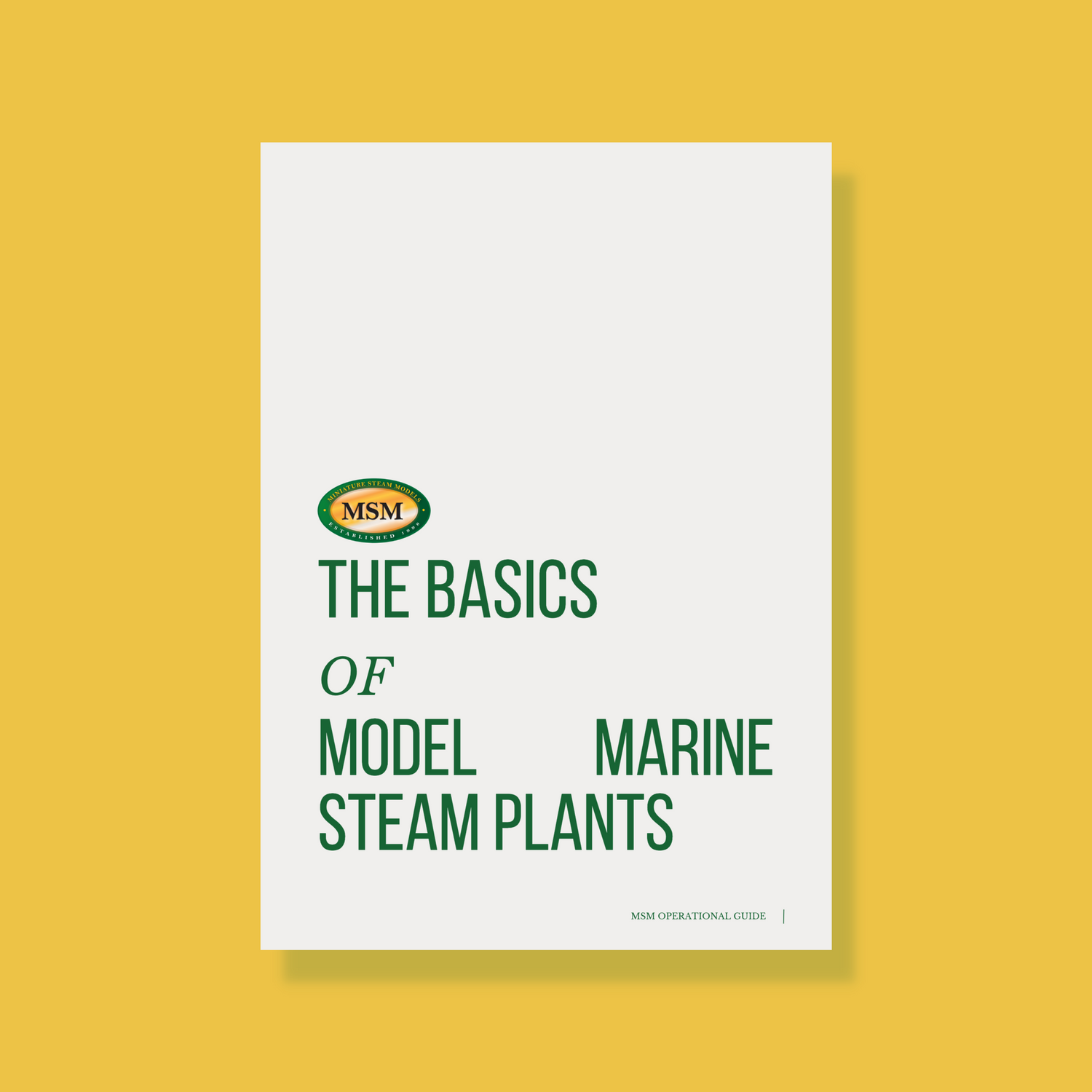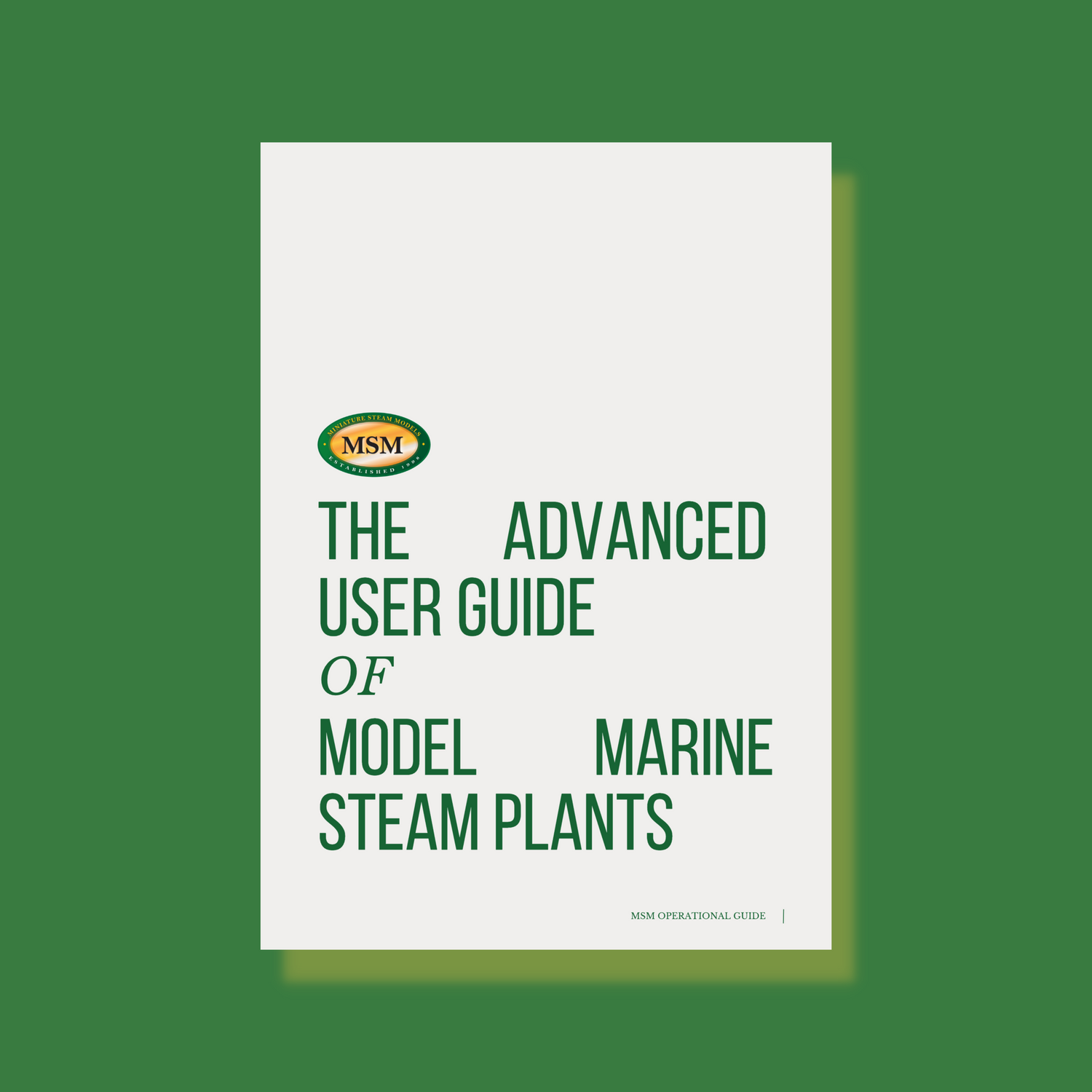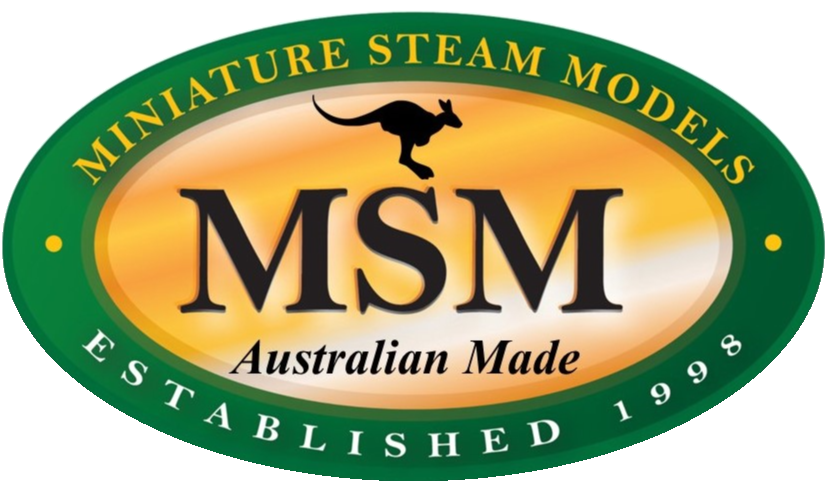Guide to Steam Plant Operations
Here and MSM we are passionate about model steam boats, with years of knowledge we would love to share. We have collated some helpful guides and some troubleshooting tips so you can get your head across your new hobby or even learn some more. Enjoy.

Dip your toes in
In this guide we cover the foundations of model steam boats. If you are new to the hobby and want to wrap your head around all of the bits and bobs then this guide is for you.

A deeper look
In this guide we take a deeper dive, so if you've got some knowledge and want to learn more then this is the place for you.
I need help
Troubleshooting FAQS
If you're having troubles with your products here are some common trouble shooting solutions. The procedures required to apply to the following responses can be found in the Assembly Manual included in the delivery documentation
All Engines
Water is coming out of the Engine
On start up when steam meets the cold engine it turns to water on all engines causing a “blubbering” at various parts of the engine. This normal for all model steam engines.
The “blubbering” will stop when the engine has received steam for a minute or so.
Running the engine until it reaches operating temperature will stop the “blubbering”. This should be standard procedure for all cold start-ups. Another cause could be that the boiler has been overfilled with water, and water, not steam is flowing down the steam supply line. Remove excessive water from the boiler when cooled down. Procedures for filling the boiler can be read on the Test Certificate sent with the boiler.
Oscillating engines
The engine will NOT start
Check that the knurl nut on piston rod is fully tightened?
Check the flywheel grub screw is tightened on to the crank shaft flats. (Please note that the flywheel big end pins should be 90 degrees out of phase.)
Engine will only go on one direction or fast in one and slow in the other direction?
Ports in the trunk partly blocked. Clear ports. Also check as per points in “the engine will not start, above.
Steam comes out of the Cylinder face
Against a strong light make sure that no light can be seen between the faces. If light can be seen remove the holding bracket and springs and rotate the cylinders back and forward, through 90 degrees until they are fully bedded in and no light can be seen.
Steam comes out of the speed and direction control
Remove speed control and clean surfaces. When replacing do not over tighten the holding bolt as over tightening will not solve the problem. The bolt used has a shoulder on it that sets exactly the spring tension and should be tightened gently.
The Oscillator runs slow in both directions
If the engine has been run in on compressed air and lack of lubrication of the cylinders can result in damage to the piston rings and cylinder walls causing increased friction and the engine run slow if at all. DO NOT RUN ANY STEAM ENGINE ON COMPRESSED AIR BECAUSE THERE IS NO WAY OF CORRECTLY LUBRICATING THE CYLINDERS. Lubricate all bearing surfaces with light machine oil. Do not use car engine oil or steam oil. Check displacement lubricator is working correctly. After a run drain the oil/water mix out. It should be white in colour. If correct it means the cylinders are being lubricated correctly during operation. If steam oil only comes out it means the jet in the spray bar is blocked. Wash the displacement lubricator in a suitable solvent and blow compressed air in one end while blocking the other. This will ensure compressed air is passing through the jet. (please note the spray bar jet is under the spray bar and cannot be seen). (refer to Displacement Lubricators in the Advanced Users Guide on page 7)
Slide Valve Engines
Excessive steam comes out of the exhaust manifold
The "D" Valve in the steam chest may not be moving freely on the cross nut. Make sure all surfaces are clean and no foreign matter is preventing movement of the "D" valve on the cross nut. The "D" valve should be free to move against the surface of the cylinder. This is most likely to be experienced when starting up a new engine triggered from rough handling during transit and should be treated under our Warranty commitments.
The engine will run slowly and/or only in one direction
The eccentric strap should be in-line with the valve rod clevis in both forward and reverse directions. Ensure the eccentric grub screws are tightened onto the crankshaft flats. Please contact us for detailed advice as to how to achieve this at any time.
The engine will not run
Check the valve nut is correctly screwed into the steam chest preventing movement of the eccentric straps. If the problem persists, contact us anytime for further advice DO NOT RUN ANY STEAM ENGINE ON COMPRESSED AIR BECAUSE THERE IS NO WAY OF CORRECTLY LUBRICATING THE CYLINDERS.
Boilers
The boiler will not light
Adjust the burner out of the boiler as per instructions. Replace the burner into the boiler fire tube, light it by turning on the gas supply and lighting from the top of the flue using a gas lighter. If this fails repeat the process.
The burner makes a roaring sound.
If the burner makes a roaring sound means it is burning correctly. Our 2” and 3” boilers have a steady “roar”. Our 4” boiler has a “stuttering roar” If no or very low sound readjust the burner as per the instructions supplied.
The burner will not produce a strong flame
- The gas jet could be blocked. Remove the gas jet and clean the jet or replace it if badly blocked. While we appreciate that jets replacements can be easily purchased from gas suppliers, but our experience is that they can seriously vary in quality. Please, only use the jets that we supply.
- The gas tank could be too cold for the gas in the tank to come out. At low temperatures, the gas can become a liquid. Wait until the gas tank warms up. Do not place in hot or boiling water.
Refillable Gas Tanks. Gas comes out of the filler valve while filling
- The refill adapter is not correctly aligned with the gas tank. It is assumed that you have followed the advice to remove the gas tank from the boat and are performing the refill operation with the tank on a firm base. Make sure the filler adapter is pointing into the tank valve in a straight line with the vertical centreline of the tank.
- Not enough pressure is applied to the filler valve to open it correctly. Apply more pressure.
Your Boiler Test Certificate has instructions as to how to correctly carry out a refilling. The Advanced User Guide provide more information on pages 10. - the filler valve may be faulty or the refill adaptor damaged. Replace the filler valve and/or the refill valve as listed in the website.
